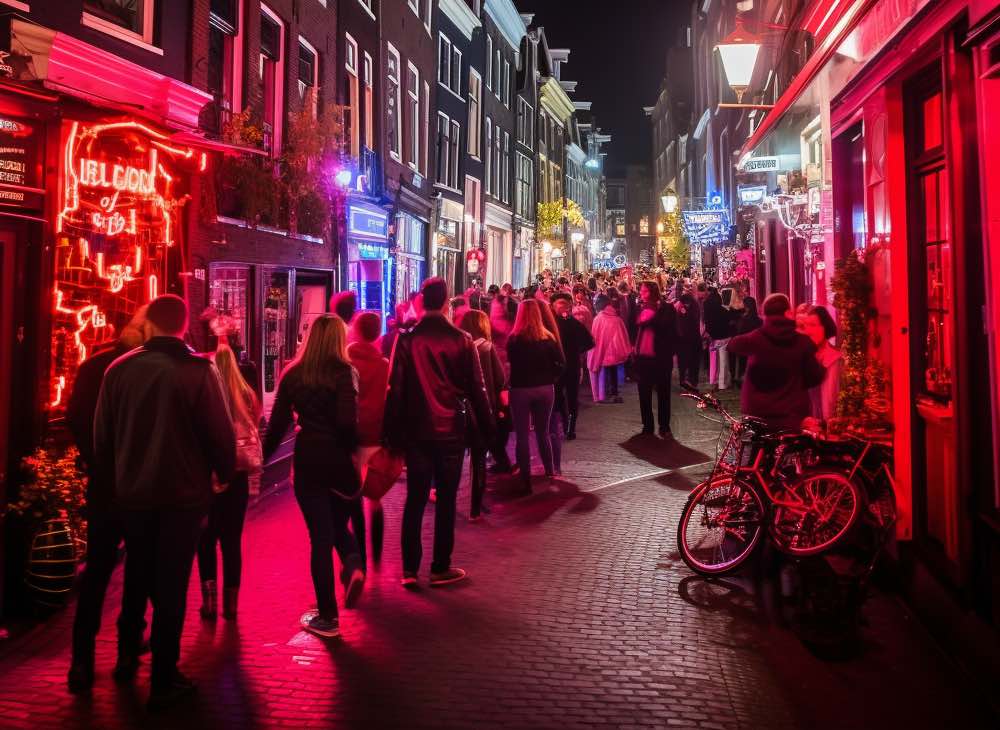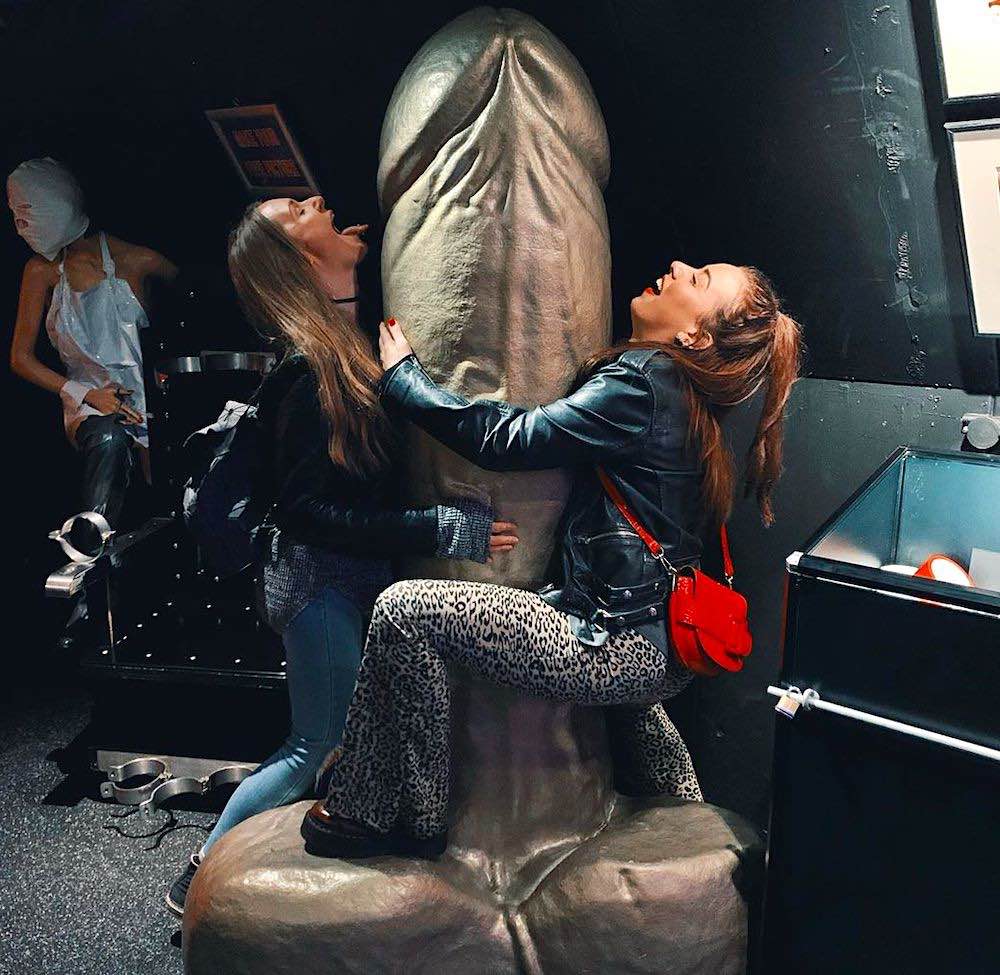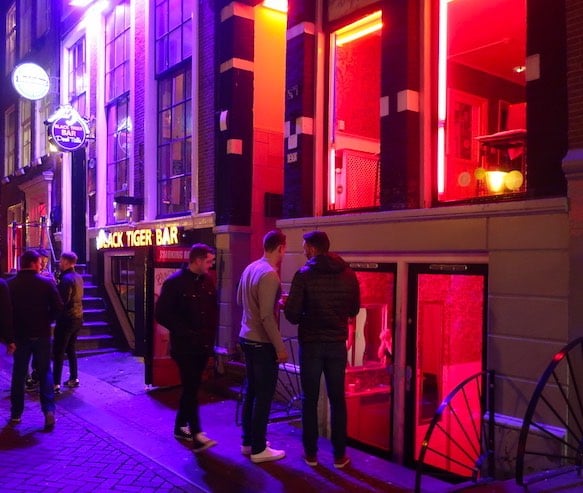What is the Red Light District in Amsterdam?
Posted on: Oktober 1, 2024

What is the Red Light District in Amsterdam?
Dive into “What is the Red Light District in Amsterdam?”—a place where history, culture, and controversy collide. This iconic area isn’t just about its neon glow; it’s a testament to Amsterdam’s unparalleled openness and the complex issues surrounding legality and morality. Discover why it’s a must-see for travelers seeking more than just surface-level tourism.

Amsterdam’s Red Light District, known as De Wallen, is one of the city’s most famous and controversial attractions. Drawing in tourists from around the globe, it offers a unique glimpse into the liberal attitudes that the Netherlands is renowned for. This guide aims to provide tourists with a comprehensive understanding of the area, covering its history, cultural framework, economic impact, and the social issues it faces, all while offering tips on how to respectfully navigate this unique part of Amsterdam.
Highlights

For those intrigued by the vibrant and unique atmosphere of Amsterdam’s Red Light District, the exploration doesn’t end with its neon lights and historic streets. Beyond its initial allure, there’s a plethora of activities that cater to the curiosity of every visitor. From engaging cultural experiences to tantalizing culinary adventures, the district offers more than meets the eye. To discover a curated selection of activities that promise to enrich your visit, delve into our guide on things to do in Amsterdam Red Light District. Here, you’ll find recommendations that highlight the area’s diverse attractions, ensuring your experience is both memorable and respectful towards this unique community.
History and Evolution

The Red Light District has a long and complex Geschichte, dating back to the 14th century when sailors arrived in Amsterdam, seeking entertainment during their time ashore. Over the centuries, De Wallen evolved from a maritime district with a few brothels and taverns to become the legalized, regulated area known for sex work and cannabis Coffeeshops today. This transformation reflects changes in societal attitudes and government policies towards sex work, aiming to provide safety and reduce stigma for those working within the industry. Understanding this history is crucial for tourists, as it adds depth to the visit, transforming it from mere curiosity to an appreciation of the area’s significance in Amsterdam’s cultural tapestry.
Cultural & Legal Framework

The Netherlands is known for its progressive laws regarding prostitution and cannabis, which are crucial aspects of the Red Light District’s identity. Since 2000, sex work has been fully legalized and regulated, with workers required to register and receive regular health checks. Similarly, the sale and consumption of cannabis in designated coffee shops are tolerated under strict conditions. For tourists, this legal framework ensures a safe and regulated environment but also requires an understanding of the rules. For instance, photographing Sexarbeiterinnen in their windows is strictly forbidden, a rule set to protect the privacy and dignity of the workers. By respecting these laws, tourists contribute to the respectful and responsible tourism that Amsterdam strives for.
Tourism and Economy

Tourism plays a significant role in the economy of the Red Light District, attracting visitors with its unique offerings that are not found in most other places. However, the influx of tourists also presents challenges, such as overcrowding and the commodification of local culture. The city government has been working to balance the economic benefits of tourism with the quality of life for residents and the sustainability of the district. Tourists can contribute positively by being mindful of their impact, spending their money in local businesses, and engaging with the area in a way that respects its residents and cultural heritage.
Social Issues and Controversies

While the Red Light District is a major tourist attraction, it’s also at the center of various social issues and controversies, such as human trafficking and the exploitation of Sexarbeiterinnen. The Dutch government and non-governmental organizations have implemented numerous initiatives to combat these problems, focusing on ensuring the safety and rights of sex workers. Tourists should be aware of these issues and support businesses and practices that promote ethical and responsible interactions within the district. By staying informed and conscientious, visitors can help in the fight against exploitation and contribute to the positive development of the area.
Experience and Etiquette

Visiting the Red Light District offers tourists a unique experience, but it comes with the responsibility to act respectfully and ethically. Observing local laws and customs, such as not taking photos of the sex workers and not consuming cannabis in public spaces outside designated areas, is essential. Tourists should remember that the district is not just an attraction but also a place where people live and work. Exploring other attractions in the area, like the Oude Kerk or participating in red light district tours that focus on the history and culture of the district, can enrich the experience. By approaching their visit with respect and curiosity, tourists can ensure that their presence is positive for both themselves and the community they are visiting.
By covering these aspects, tourists can gain a deeper understanding of the Red Light District, ensuring their visit is both enjoyable and respectful. Amsterdam’s approach to managing this unique district offers a fascinating glimpse into how cities can balance the needs and rights of residents, workers, and visitors alike.
Preise

Exploring the vibrant and historic Red Light District of Amsterdam reveals a unique tapestry of culture, legality, and social dynamics that captivate visitors from around the globe. However, beyond the neon-lit allure and cultural intrigue, understanding the practical aspects of visiting this iconic area is equally important. For those curious about navigating the district with insight into expenses, our guide on Red Light District prices offers comprehensive details on what to expect financially. This essential read complements your journey through Amsterdam’s most famous district, ensuring a well-rounded and informed experience that spans from its rich history to the practicalities of its contemporary allure.
Directions

When visiting Amsterdam’s Red Light District, having a map is very useful. You can see where to walk and find interesting places. Look at our Karte des Amsterdamer Rotlichtviertels for easy directions. This map helps you not get lost and enjoy more. Perfect for tourists who want a simple guide.
Frequently Asked Questions
What makes the Red Light District in Amsterdam so distinctive?

Amsterdam’s Red Light District, also known as De Wallen, stands out for its legalized sex work, adult entertainment shops, and marijuana dispensaries. This district showcases Amsterdam’s progressive stance on issues like sex work and cannabis use, drawing in a global audience eager to experience its uniquely liberal culture.
Is it permissible for tourists to explore the Red Light District?
Indeed, tourists are allowed to visit Amsterdam’s Red Light District, immersing themselves in its extraordinary cultural landscape. While exploring, visitors must observe local regulations and customs, including restrictions on photographing sex workers and rules regarding the use of cannabis.
Are photographs allowed in the Red Light District?
Photography of sex workers in their display windows is forbidden in the Red Light District to safeguard their privacy and respect. Tourists should heed this important rule to prevent any legal complications and to show respect towards the workers.
Other than that is photographing in Amsterdam Red Light District allowed. Just do not take pictures of the sex workers – without permission.

Street artist on the Oudezijds Achterburgwal street.
When is the Red Light District accessible?
The Red Light District operates around the clock, though the hours for its various attractions, such as red light windows, bars, Sexshops, cannabis shops, and Sexshows can differ. Sex workers’ windows tend to be more active during the night, whereas cannabis shops usually close by 1 AM.
How should tourists behave respectfully in the Red Light District?
Visitors demonstrate respect in the Red Light District by complying with local laws and social norms, such as refraining from taking pictures of sex workers, avoiding littering, and keeping noise to a minimum. Participating in guided tours and appreciating the district’s rich history and culture also helps in honoring the local community.
ALSO READ:
Top 10 Hotels in Amsterdam Red Light District
Top 9 Sex Date Sites in Holland








It feels so good to receive emails from Amsterdam Red Light District.I always feel that it is amost beautiful and fascinating place .I love seeing all the images and archive images on the websites and videos please keep in touch as I say it feels so good to feel part of it now by your emails